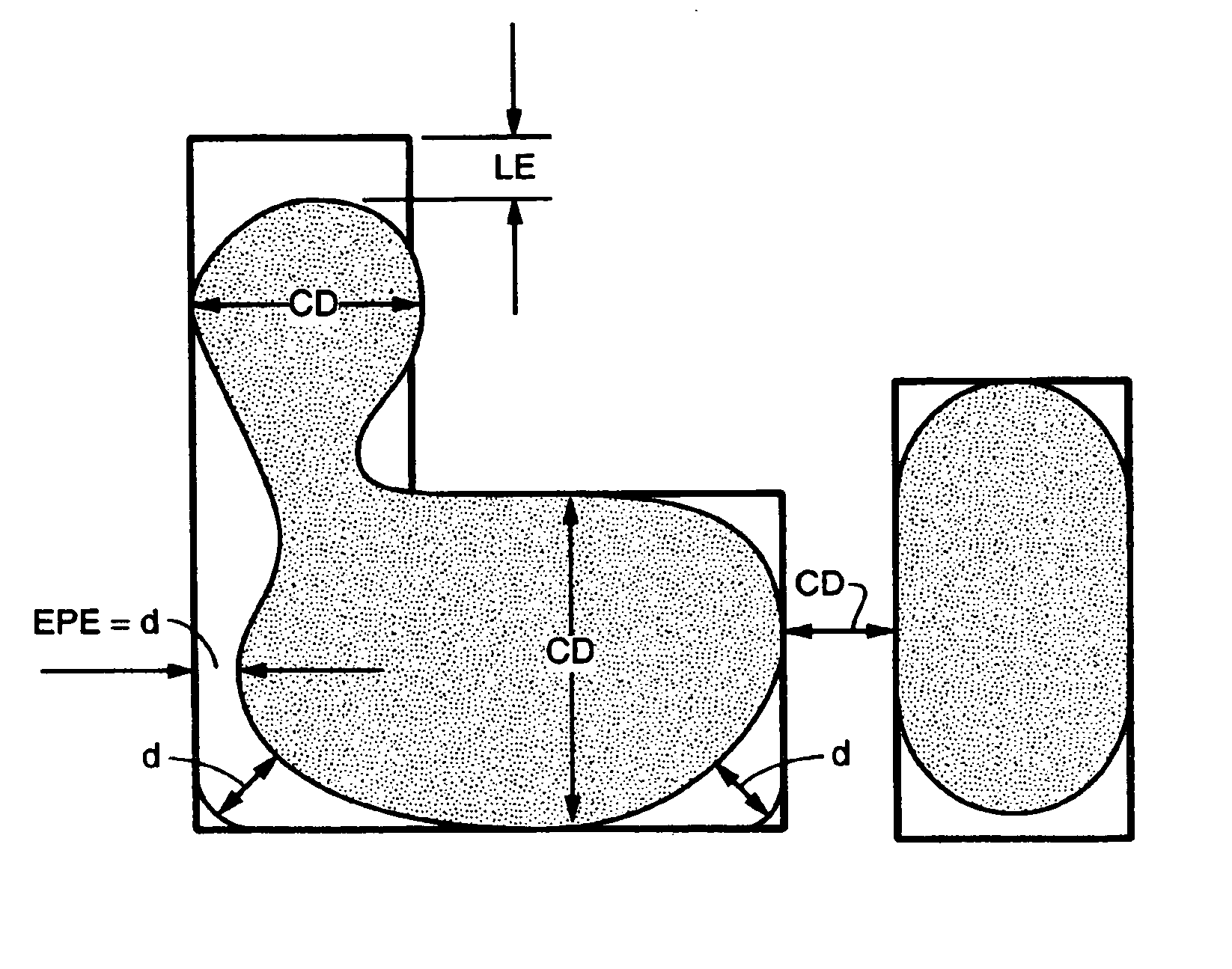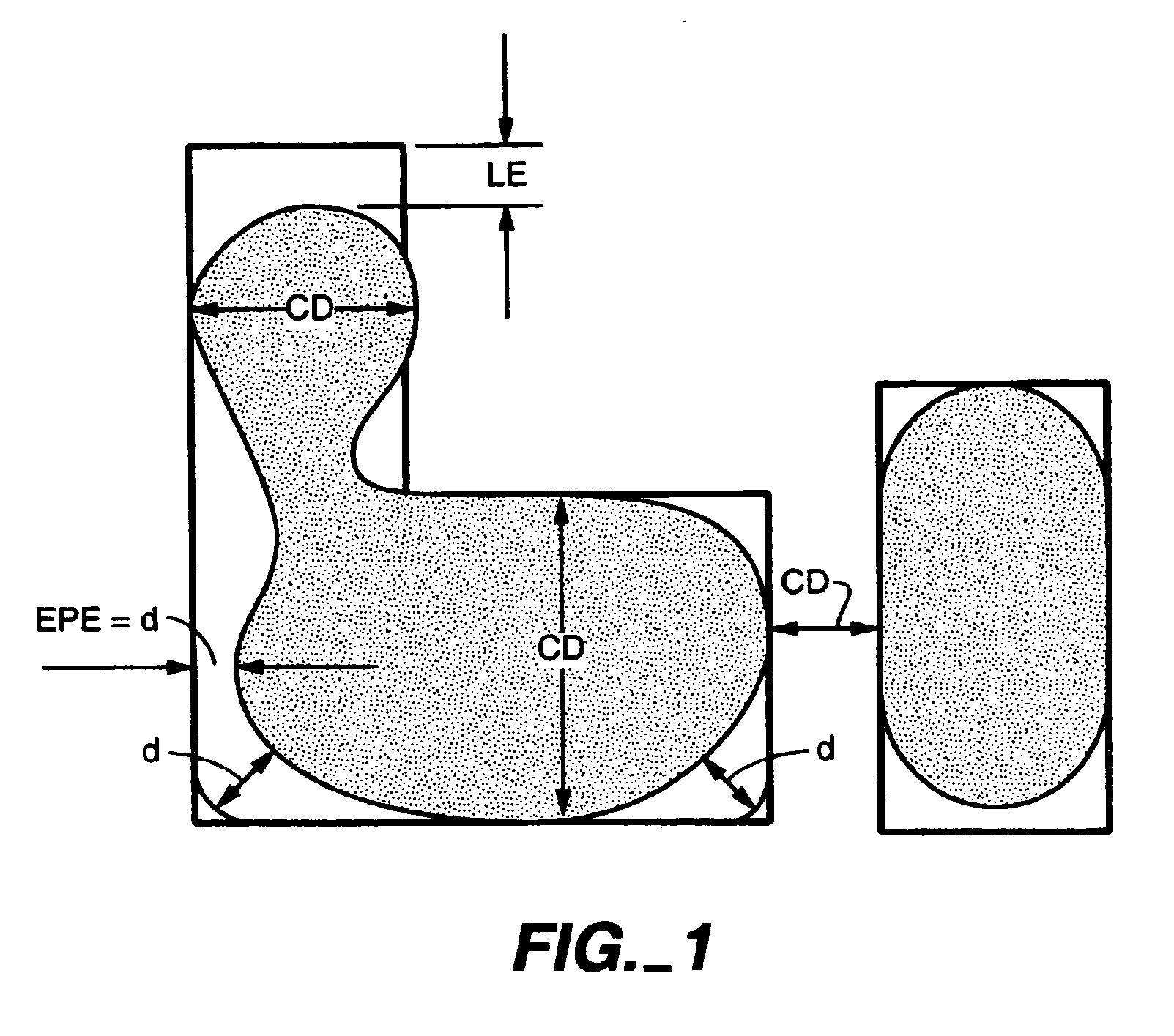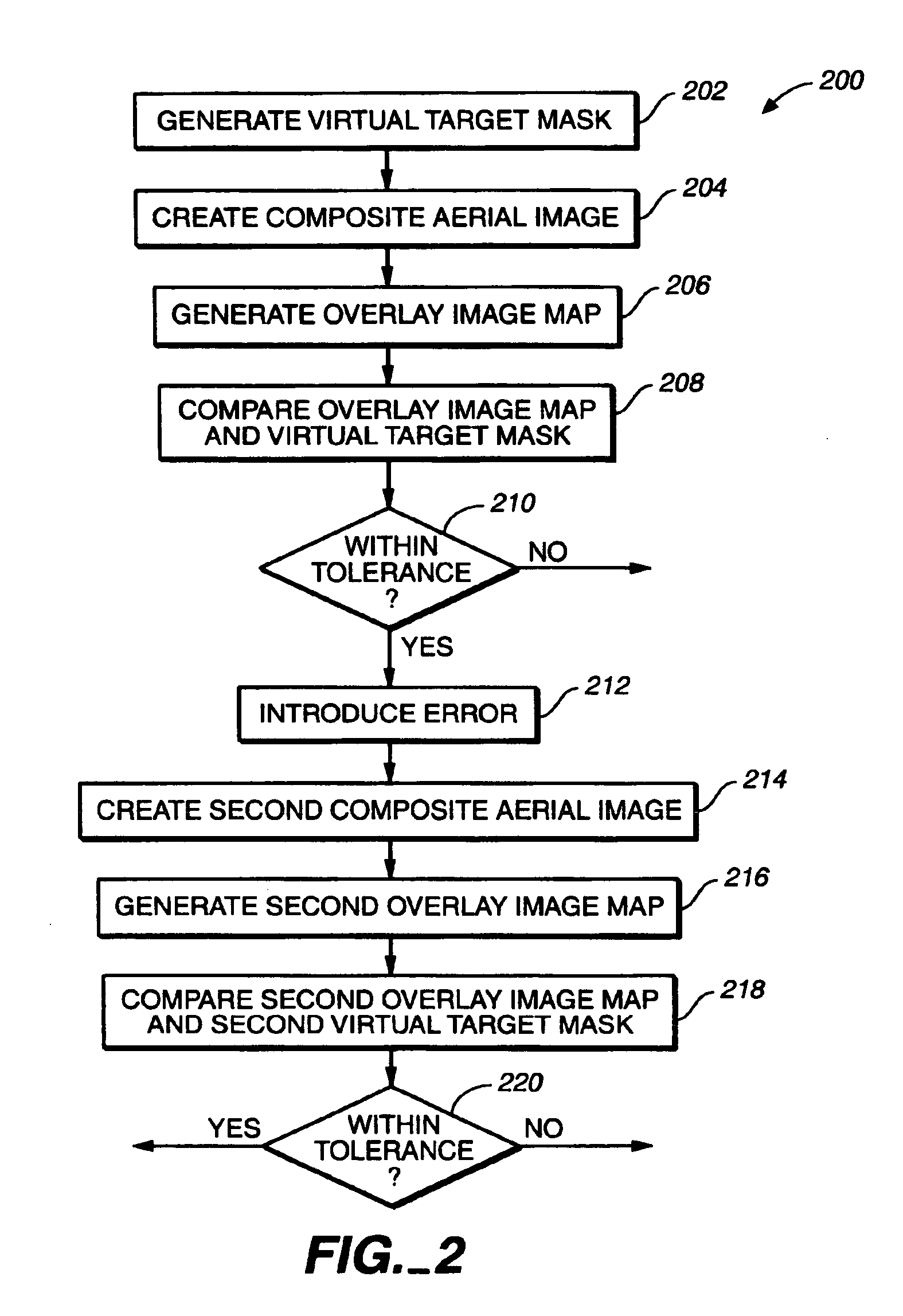Method for post-OPC multi layer overlay quality inspection
a multi-layer overlay and quality inspection technology, applied in image enhancement, instruments, photomechanical equipment, etc., can solve problems such as problems such as problems such as ic designs that cannot projected images to exhibit some rounding and other optical distortion, and may not be ignored in layouts with features smaller than the original
- Summary
- Abstract
- Description
- Claims
- Application Information
AI Technical Summary
Benefits of technology
Problems solved by technology
Method used
Image
Examples
Embodiment Construction
[0023] Reference will now be made in detail to the presently preferred embodiments of the invention, examples of which are illustrated in the accompanying drawings.
[0024]FIG. 1 illustrates an ideal boundary of a target design and a boundary of a simulated aerial image (shaded) providing post-OPC two dimensional quality definitions used in the description of the present invention. The aerial image represents substantially the optical information contained in the reticle pattern that is recorded in the photoresist layer of a semiconductor wafer. A simulated aerial image may be used for correcting mask pattern deviations resulting from optical proximity effects, and to find the locations in the reticle pattern that result in the worst case error.
[0025] Two-dimensional (2D) quality definitions and applications for post-OPC inspection are described more fully in U.S. patent application Ser. No. 10 / 155,620 filed May 22, 2002, titled “Quality Measurement of an Aerial Image” (hereinafter,...
PUM
| Property | Measurement | Unit |
|---|---|---|
| feature sizes | aaaaa | aaaaa |
| feature sizes | aaaaa | aaaaa |
| area | aaaaa | aaaaa |
Abstract
Description
Claims
Application Information
 Login to View More
Login to View More - R&D
- Intellectual Property
- Life Sciences
- Materials
- Tech Scout
- Unparalleled Data Quality
- Higher Quality Content
- 60% Fewer Hallucinations
Browse by: Latest US Patents, China's latest patents, Technical Efficacy Thesaurus, Application Domain, Technology Topic, Popular Technical Reports.
© 2025 PatSnap. All rights reserved.Legal|Privacy policy|Modern Slavery Act Transparency Statement|Sitemap|About US| Contact US: help@patsnap.com



